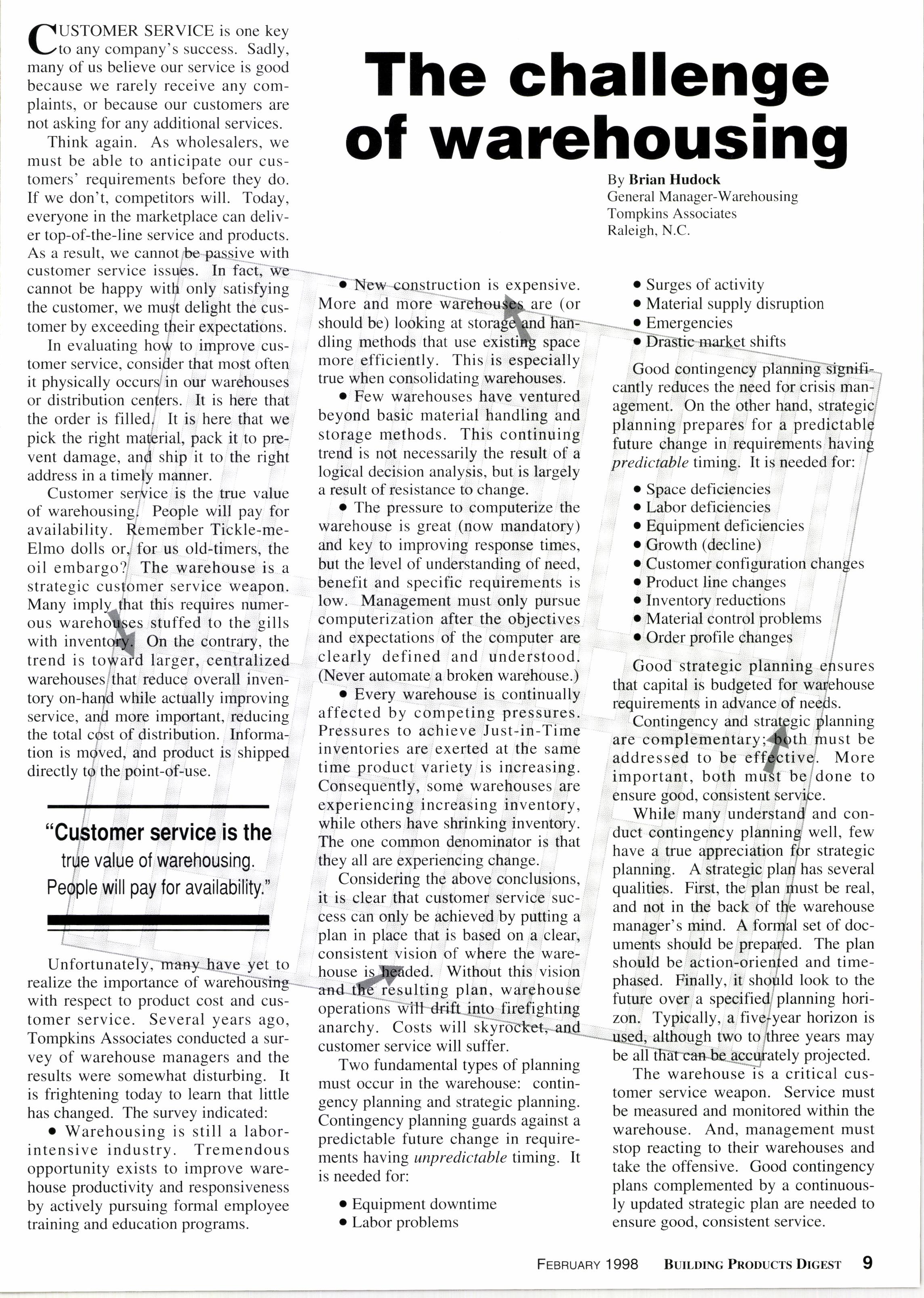
1 minute read
The challenge of warehousing
C New construction is expensive. More and more w should be) looking at dling methods that use space more efficiently. This is especially true when consolidating.warehouses.
By Brian Hudock General Manager-Warehousing Tompkins Associates Raleigh, N.C. . Surges of activity
are (or o Material supply disruption
o Few warehouses have ventured beyond basic material handling and storage methods. This continuing trend is not necessarily the result of a logical decision analysis, but is largely a result ofresistance to change.
The pressure to computerize the warehouse is great (now mandatory) and key to improving response times. but the level of understanding of need, benefit and specific requirements is low. Management must only pursue computerization after the objectives and expectations of the computer are clearly defined and understood. (Never automate a broken warehouse.)
o EvlU warehouse is continually alfected by competing pressures. Pressures to achieve Just-in-Time inventories are exerted at the same time product variety is increasing. Consequently, some warehouses are experiencing increasing inventory, while others have shrinking inventory. The one common denominator is that they all are experiencing change.
will pay for availability."
Considering the above conclusions, it is clear:that customef service'success can only be achieved by pntting a plan in place that is based on,a clearr, consistent vision of where the ware-
Unfortunatefvl ye yet to house i realize the importance of with respect to product cost and customer service. Several years ago, Tompkins Associates conducted a survey of warehouse managers and the results were somewhat disturbing. It is frightening today to learn that little has changed. The survey indicated: o Warehousing is still a laborintensive industry. Tremendous opportunity exists to improve warehouse productivity and responsiveness by actively pursuing formal employee training and education programs.
. Space deficiencies o Labor deficiencies i o Equipment deficiencies o Growth (decline) o Customer configuration changes o Product line changes f
. Inventory reductions j rMaterial control problems i o,Ordpr profile changes i
Cood strategic planning efrsures that capital is budgeted for wafehouse requirements in advance afneefls.
Contingency and strag:gic planning are complementary;fith must be addressed to be efflbtivq. More important, both mfit beidone to ensure good, consistent serviFe.
While' manytunderstand and con- sulting plan. warehouse wttHrift j4t9 firefi ghting
Without this vision operations anarchy. Costs will sky customer service will suffer.
Two fundamental types of planning must occur in the warehouse: contingency planning and strategic planning. Contingency planning guards against a predictable future change in requirements having unpredictable timing. It is needed for: o Equipment downtime o Labor problems used, although fwo torthree years may Ue atftharca+be.qggfately projected.
The warehouse is a critical customer service weapon. Service must be measured and monitored within the warehouse. And, management must stop reacting to their warehouses and take the offensive. Good contingency plans complemented by a continuously updated strategic plan are needed to ensure good, consistent service.










